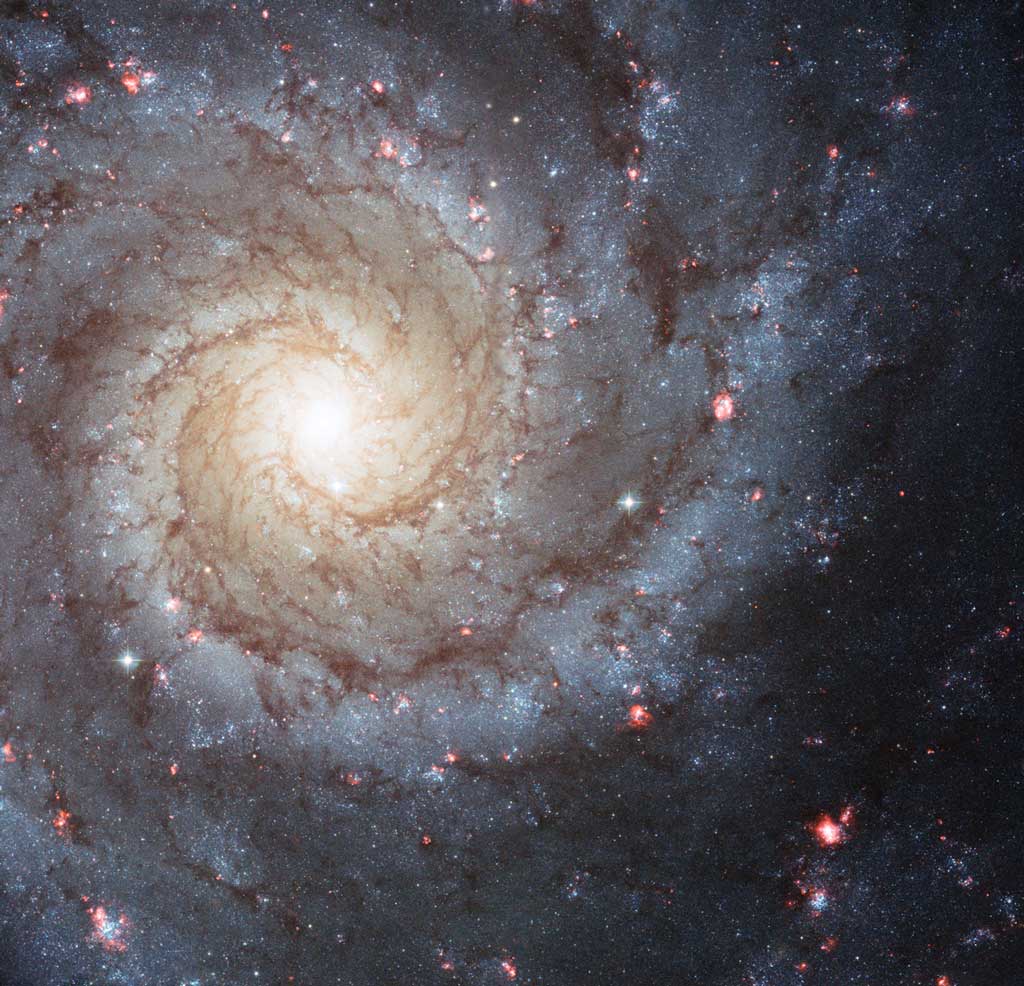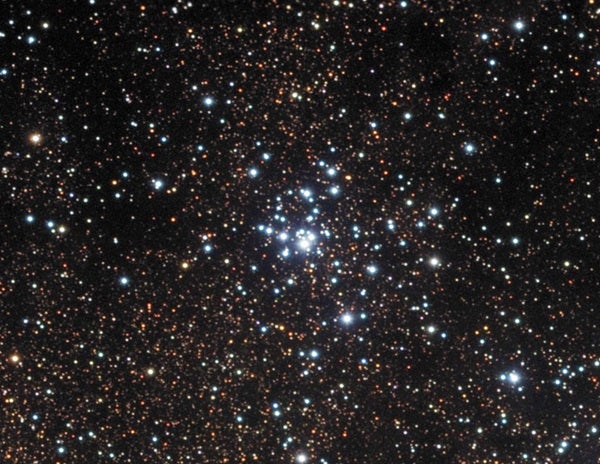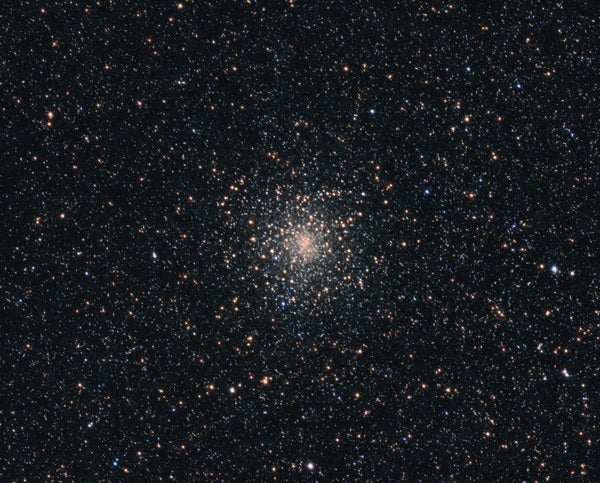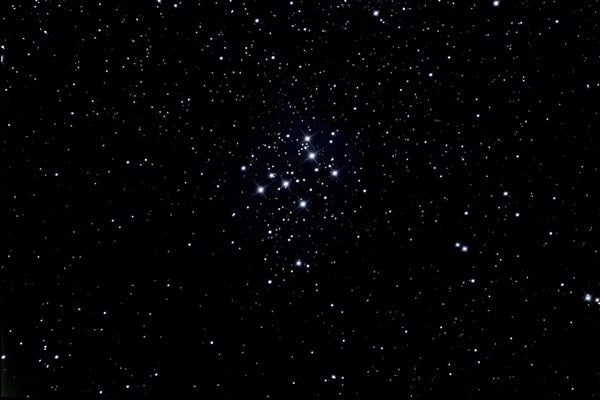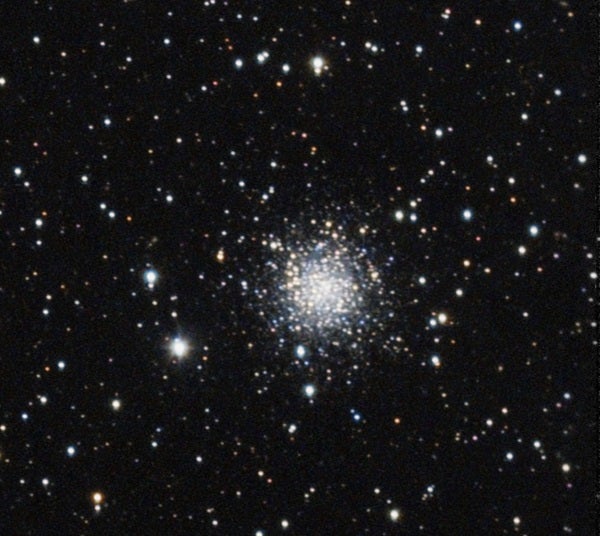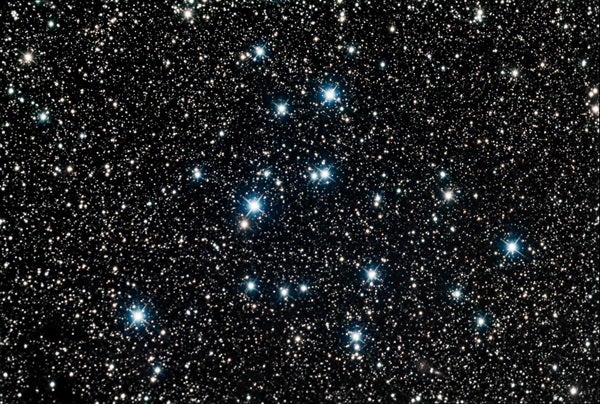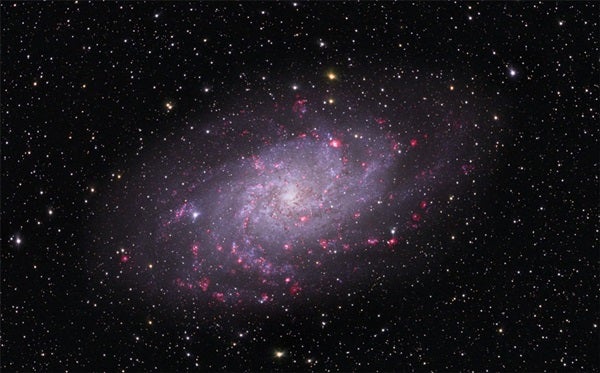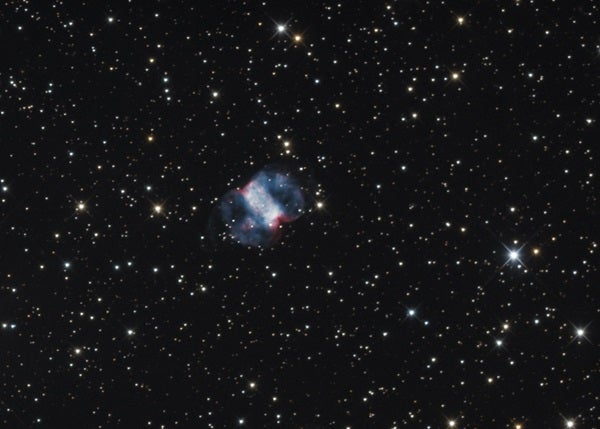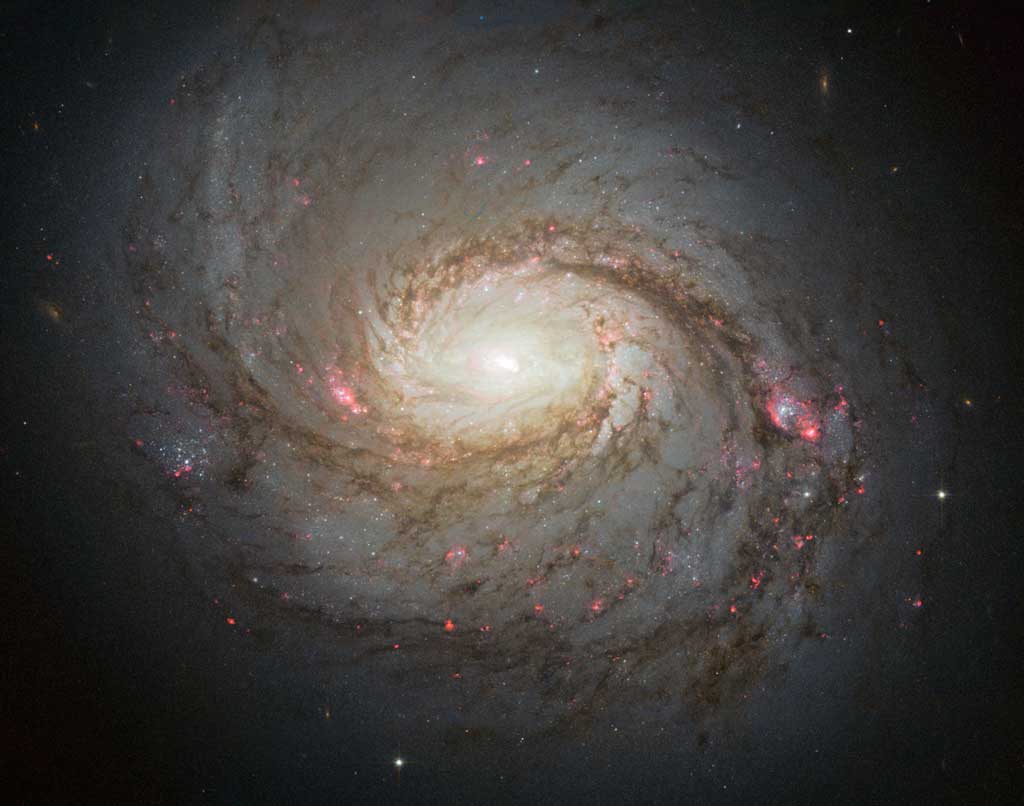It’s been six months since astronomy clubs around the globe hosted events for the Messier marathon. The goal of this single-night observing challenge is to catch all 109 deep-sky objects in French comet-hunter Charles Messier’s famous catalog.
Due to the way these celestial gems are positioned in the sky, there is only a brief span from mid-March to early April when all the objects are visible over the course of a single night. But even if you missed the last full marathon experience, you can keep your observational muscles in shape by giving this mini-marathon a try.
In the spirit of my mini-Messier marathons for spring (April 2021 issue) and summer (August 2021 issue), here is your agenda for autumn. And, unlike participating in a full Messier marathon, you won’t have to stay up all night for this one; you can view all 20 of these objects between the time it gets dark and midnight.
I’ve listed the objects in order of right ascension, which means the first will be farthest west and the following objects will set in order after it, giving you more time to observe each.
In 2022, the Moon is New on Sept. 25 and Oct. 25. So, your first observing window runs from around Sept. 18 to Sept. 27. Starting Sept. 28, stray moonlight will interfere with your search until Last Quarter, which occurs on Oct. 17. Then the sky will stay Moon-free until past midnight for another week, marking your second observing window. Be sure to let your scope cool to the ambient temperature, take your time with each object, and have fun!
Let’s get started
Our first target is globular cluster M14 in Ophiuchus, which is neither faint (magnitude 7.6) nor small (11.7′). However, it lies in a part of the sky far from any bright star. To find it, start at Gamma (γ) Ophiuchi and move 6.5° south-southwest. Through a 4-inch scope at 100x, you’ll see a tight sphere that’s not easy to resolve. Then crank up the power and see if you notice that it’s not perfectly round; it appears slightly stretched in an east-west orientation.
Next, look for open cluster M21 in Sagittarius. It glows at magnitude 5.9 and spans 13′. You’ll find this often overlooked Messier object 2.6° southwest of Mu (μ) Sagittarii. You’ll definitely spot the Trifid Nebula (M20) first. When you do, look slightly northeast for M21. A 6-inch scope reveals two dozen stars brighter than 12th magnitude. The 7.2-magnitude star SAO 186215 shines at the cluster’s center.
The third object on our list, M24, also known as the Small Sagittarius Star Cloud, is an asterism. Start by finding it through binoculars 3° north of Mu Sagittarii. At magnitude 4.6, it’s relatively bright, and it measures a whopping 95′ by 35′. At M24’s northwest end is NGC 6603, a magnificent open cluster of several dozen stars. And while you’re in the area, look 1° west-northwest for Barnard 92, a dark nebula shaped like a fingerprint.
The 6.9-magnitude open cluster M18, which you’ll find 4.2° north-northeast of Mu Sagittarii, is up next. A 4-inch telescope reveals about a dozen stars in a region 10′ across. Take it easy on the power — higher magnifications spread the cluster out so much that it gets lost among the background stars.
Our second globular on the list (often ignored because spectacular M22 resides nearby) is M28 in Sagittarius. It glows at magnitude 6.8 and boasts a diameter of 11.2′. Look for it 1° northwest of Lambda (λ) Sagittarii. An 8-inch scope will resolve several dozen stars in its wide halo. Through a 14-inch scope, your star count will climb to more than 150. High-power views of the core unlock its three-dimensional appearance.
Next, look 2.5° northeast of Kaus Australis (Epsilon [ε] Sagittarii) for another globular, magnitude 7.6 M69. Through an 8-inch scope, you’ll have to look carefully to resolve any of the stars packed in its 9.8′ diameter. Its core appears broad but concentrated, and it is surrounded by a thin halo. M69 lies in a rich star field, so crank up the power to see it best.
Our next target, M29, lies in Cygnus. Although it’s relatively bright (magnitude 6.6), it’s one of the most difficult objects on Messier’s list to identify because it’s a loose open cluster only 6′ wide that sits in front of a rich Milky Way star field. To find it, look 1.8° south of Sadr (Gamma Cygni). A small scope works best because it won’t reveal the myriad surrounding stars.
When you move on to observing M72 in Aquarius through a small scope, you can see why Messier initially thought this object was a comet. The globular cluster glows at magnitude 9.3 and spans 5.9′. You’ll find it 3.3° southeast of Albali (Epsilon Aquarii). Most of M72’s stars lie close to its core, which accounts for three-fourths of the cluster’s diameter. To spot the outliers, use a magnification of 200x or higher.
Also located in Aquarius, M73 resides just 1.2° east of M72. With a magnitude of 8.9 and angular diameter of just 2.8′, M73 is nothing more than an equilateral triangle of stars with a fourth star lying just to the north-northwest. That Messier thought that this pedestrian grouping could be confused for a comet proves how primitive his telescope was. It’s all right to take a quick glance and check this object off your list.
Now head north and find open cluster M39 in Cygnus. It glows at magnitude 4.6 and sports a diameter of 0.5°. To locate it, point your telescope 2.8° north-northeast of Rho (ρ) Cygni. Look closely through a low-power eyepiece. M39 is so big that it’s easy to lose among the rich Milky Way background. You should be able to count two dozen stars brighter than 12th magnitude.
Move to Cassiopeia for our next target, open cluster M52. Find it by tracing a line from magnitude 2.2 Alpha (α) Cassiopeiae to magnitude 2.3 Beta (β) Cas. The distance between those stars is 5°. Continue another 6° and you’ll land on M52. An 8-inch scope will reveal this magnitude 6.9 cluster to have some 75 stars ranging from 9th to 12th magnitude packed within about 13′ across. Although there are lots of stars in the field, M52 is easy to spot. Look for the prominent clump of six stars on its eastern edge.
Next up is the magnificent spiral M31, also known as the Andromeda Galaxy, along with its satellite, elliptical galaxy M32. The latter object glows at magnitude 8.1 and lies 0.4° south of the center of M31. But at 8′ by 6′, M32 is not the standout in this part of the sky.
M31 glows at magnitude 3.4, bright enough to spot from a dark sky without optics. It’s also huge, measuring 185′ by 75′, an area greater than a dozen Full Moons. This star city is the nearest large spiral to our Milky Way, and it sits at the far end of the Local Group of galaxies. To observe it, either use low power for an overall view, which includes M31’s nucleus, dust lanes, and two companion galaxies (M32 and NGC 205), or crank up the power and take in small regions at a time. Especially look for bright clumps in M31’s spiral arms that mark sites where new stars are forming.
Neighboring Cassiopeia holds our next target, M103. This magnitude 7.4 open cluster lies 1° northeast of Delta (δ) Cassiopeiae. M103’s bright stars stand out against the rich Milky Way. The 40 members range from 8th to 13th magnitude and are grouped in a tight triangle 5′ on a side.
The compact trio of stars that make up the constellation Triangulum holds one of the sky’s true wonders: M33, also known as the Pinwheel Galaxy (not to be confused with M101, also often called the Pinwheel Galaxy). This magnificent spiral glows at magnitude 5.7 and measures 67′ by 42′. Despite its listed magnitude, this galaxy has a low surface brightness. Binoculars will reveal its shape, but the best approach is through a 12-inch or larger telescope. Find emission nebula NGC 604, which sits at the end of M33’s northern spiral arm. Crank the magnification past 200x and look for two tiny lobes in contact.
Next is the magnitude 9.4 spiral galaxy M74 in Pisces, which measures 10′ by 9.5′. You’ll find it 1.3° east-northeast of Nu (ν) Piscium. An 8-inch scope will reveal the uneven spiral arms and the mottled halo around M74’s bright core. Several stars located much closer to Earth are superimposed on the galaxy.
Our next object is this list’s only planetary nebula, M76 in Perseus. It’s dim (magnitude 10.1) and small (65″), but certainly worth a high-powered look. Also known as the Little Dumbbell, it can be found 1° north of Phi (ϕ) Persei. An 8-inch scope will show you the two lobes that gave the nebula its common name. If you have access to a 16-inch, you might spot some of the large, diffuse halo that surrounds M76’s inner region.
Next up is open cluster M34 in Perseus. At magnitude 5.2, it’s bright enough for most amateurs to spot without optics from a dark site. Look for it 5° northwest of Algol (Beta Persei). A 4-inch scope lets you count more than 30 stars in an area 35′ across. At 100x, look for chains of faint stars looping across the field of view.
Our penultimate target for this mini-marathon is spiral galaxy M77 in Cetus. It glows at magnitude 8.9 and measures 7′ by 6′. You’ll find it less than 1° southeast of Delta Ceti. When you observe it, spend your time searching the disk that surrounds it for signs of mottling. Through large scopes, look for the galaxy’s tightly wound spiral arms, the brightest of which lies southeast of its core.
Finally, we arrive at M45 in Taurus, the Pleiades. At magnitude 1.6, it’s the sky’s brightest star cluster. Why Messier included it in his catalog of cometlike objects, we’ll never know. M45 is also known as the Seven Sisters, but naked-eye observers with good vision, patience, and a steady sky often see more than seven stars in the 110′-wide cluster. How many can you count? Telescopes reveal fainter stars throughout the cluster but also spread them out, so fewer populate a given field of view. M45 seems most pleasing to the majority of amateur astronomers through 10x binoculars.
OK, it’s your turn now. On the next clear and moonless night, set up your scope, get comfortable, and use this list to help you run the fall Messier mini-marathon!

